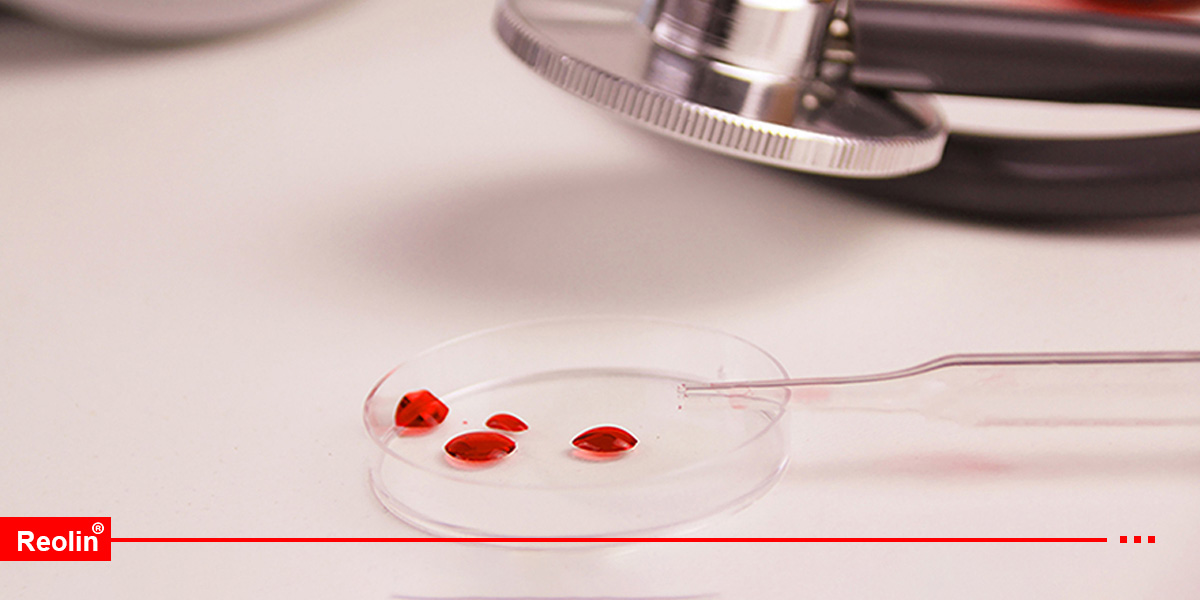Iron deficiency anemia is a term used for decreased number of red blood cells. Red blood cells are are blood cells responsible for transporting oxygen. If the number of red blood cells is less than normal, sufficient oxygen will not be transported to the body.
Iron accounts for 0.004 % of body weight; it is an essential element for the body, and depending on age, gender, health condition, body size, a certain amount of it should be added into every individual’s nutrition. A part of the body’s iron is daily lost in different ways, which could be replaced through nutrition, supplements, and drugs. If blood iron supply is reduced due to any reason, such as menstrual cycles, inappropriate nutrition, and other internal and external bleedings, the body would be inflicted with anemia and iron loss.
The role of iron in anemia:
Iron is responsible for functions in the body, such as hematopoiesis, formation of red blood cells, transforming beta-carotene into vitamin A, collagen synthesis, production of antibodies, increasing the resistance to infections, etc. The iron loss could happen due to many reasons. There are several types of anemia, the most important of which is iron deficiency anemia.
Iron deficiency anemia develops as a result of decreased red blood cells or hemoglobin in the body. As you already know, iron is the necessity of producing hemoglobin, and iron deficiency could lead to a decreased level of blood hemoglobin. Hemoglobins take oxygen from the lungs, transporting it into different parts of the body. It has an important role in the metabolism of energy. Therefore, iron deficiency could lead to several problems and complications, which are explained later in the text.
Etiologies of iron deficiency anemia
There are other reasons for iron deficiency anemia, including:
– Losing a considerable amount of blood abruptly or over a long period. This is one of the most common reasons for iron deficiency anemia.
– Inadequate absorption of iron from the nutrition: Particularly in cases with gastric or enteric surgery.
– Inadequate consumption of iron in nutrition: This is more widely seen in neonates fed with milk not rich in iron.
Iron deficiency anemia
Who are at higher risk for anemia and iron loss?
- Children of 3-6 and individuals above 65 years of age
- Vegetarians and those with an appropriate nutrition
- Individuals breathing lead in the air
- Individuals with congenital hemophilia or Willebrand disease.
- Women in their menstrual cycles, pregnant and breastfeeding women
Symptoms of iron deficiency anemia
Iron deficiency anemia is asymptomatic in the mild stages, but in an advanced stage, some symptoms emerge:
- Fatigue and weakness
- Pallor and skin discoloration to yellow
- Shortness of breath
- Lightheadedness and vertigo
- Palpitation
- Cold hands and feet
- Hair loss
- Nail plate brittleness
- Appetite for soil, ice, and starch, which is called pica.
- Tongue swelling
- Restless leg syndrome
- Angular cheilitis
- Lack of concentration and sleepiness
Is there a test for anemia?
Yes, the physician prescribes a test to evaluate the levels of hemoglobin and hematocrit. This test is called CBC or complete blood count.
Complications of iron deficiency anemia
- Increased risk of infection due to the weakened immune system
- Depression
- Preterm labor and a neonate with low birth weight
- Cardiovascular diseases such as heart failure, arrhythmias or irregular heartbeats, heart enlargement, etc.
- Development of growth disorders (movement and cognitive disorders) in children
Would anemia and iron loss lead to blood cancers?
Blood cancers are categorized into three groups, and anemia is a common symptom among them. Leukemia or blood cancer is hematological cancer in which hematopoietic cells grow and regenerate abnormally. Therefore, if your tests showed a problem, you must see a specialist to initiate the treatment ASAP.
Could anemia and iron loss be treated?
As stated, anemia could be treated to a great extent by appropriate nutrition. Taking Reolin is a significant step in the treatment of anemia, but what should be considered in the selection of correct supplements with the highest amount of absorbable iron because many supplements on the market do not have such a feature and should be taken repetitively during the day. On the other hand, some of the supplements on the market are lead to side effects such as constipation, nausea, abdominal pain, etc., which are not welcomed by the patient. Reolin is one of the few drugs that, despite treating anemia, does not lead to any gastrointestinal side-effects, and the patient reaches their desired RDA by taking one of the iron pills. Reolin is one of the few anemia drugs approved by GRAS, and its LD50 is 50,000 units, which shows its safety.
If the iron could not be absorbed through the intestines, the physician should inject the necessary doses. Therefore, visit a doctor to diagnose and treat anemia to undergo a hemoglobin and hematocrit (CBC) test.
Supplying iron through nutrition
The best way to prevent and treat anemia and iron loss is to take foods rich in iron; this iron is absorbed in the small intestines. Food irons are categorized into two groups:
- Heme-iron: It is a type of iron that is well absorbed by the body and found in resources such as meat, chicken, and fish.
- Non-heme iron: It is a type of iron that is well absorbed by the body and found in resources such as eggs, fruits, vegetables, rice, and pasta.
It should be noted that foods rich in vitamin C could increase the absorption of iron since iron absorption requires an acidic environment. Therefore, avoid taking foods with anti-acid drugs.






